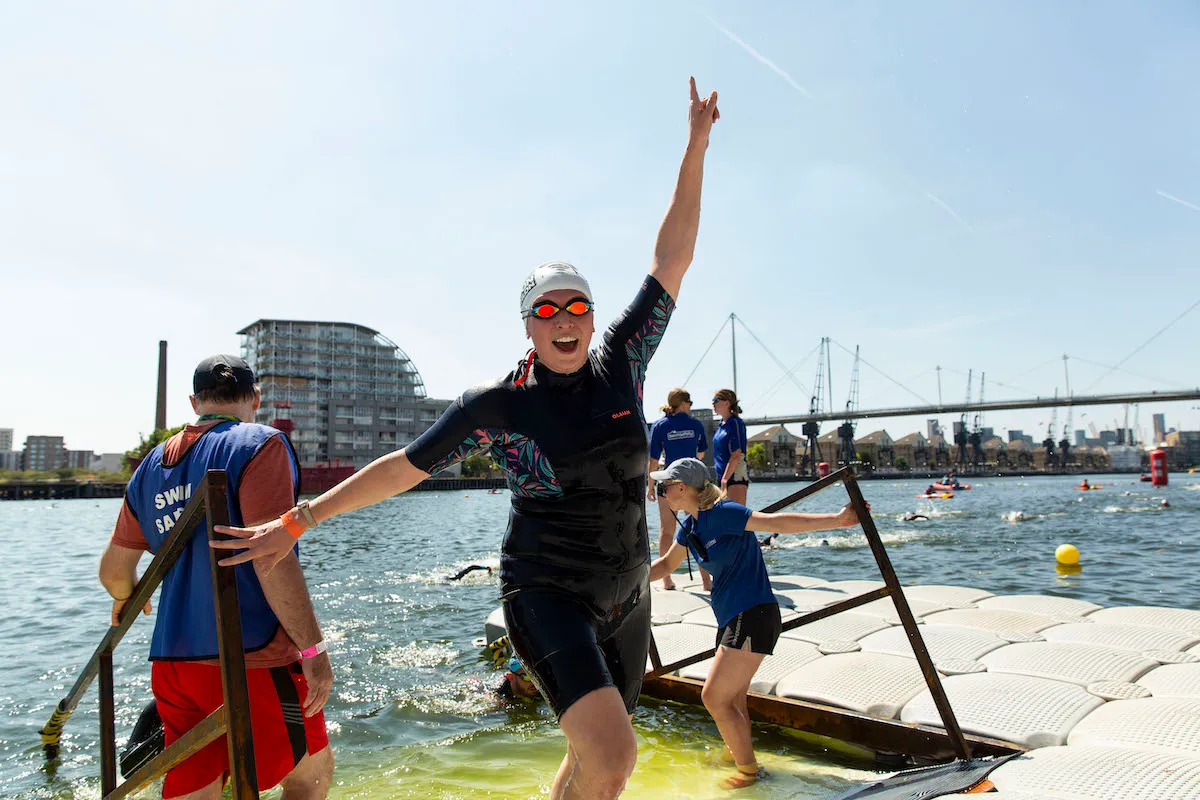London Triathlon has been going for well over 20 years, with thousands of eager athletes lining up on its start lines each year.
In 2023, there have been a few changes, though. For a start, Challenge Family has taken the event under its wing.
This means that going forward the event is going to be called Challenge London.
And there's another change, too, with the addition of a middle-distance race to its roster.
No matter what distance you're taking part in, here's our tips and training advice for racing the London Triathlon/Challenge London.
When is the London Triathlon?
The London Triathlon, or Challenge London, takes place on 6 August 2023.
Where does the race take place?
The event is based out of the ExCel Centre, in East London's Docklands area. The swim takes place in Royal Victoria Dock, the bike takes athletes into the heart of London (depending on the distance), while the run takes place on a lapped route in the Docklands.
How long is the London Triathlon?
In addition to the supersprint, sprint and Olympic distances, there is now also a middle-distance race, which has been added following Challenge Family's acquisition of the event.
Distances are as follows:
- Middle distance: 1.9km swim, 80km bike, 21.1km run
- Olympic distance: 1.5km swim, 40km bike, 10km run
- Sprint: 750m swim, 20km bike, 5km run
- Supersprint: 400m swim, 10km bike, 2.5km run
There'll also be relay options for the sprint and Olympic events.
What's the course like?

The single-lap swim takes place in the waters of Royal Victoria Dock.
Depending on your distance, you may be doing one single out-and-back lap on the bike in the streets near the Docklands, or a multi-lap course taking in the likes of Big Ben, the Houses of Parliament and the London Eye.
The run is a multi-lap out-and-back route alongside the docks.
Full route maps for all distances are available on the Challenge London website.
Top tips for racing the London Triathlon
Arrive early so you have plenty of time to get to registration and transition. Once racked, do a little recon of your transition area, walk the route from the swim-in to your bike, and then to bike exit, and then back to your transition area and run-out.
There are numbers along the wall of the north hall (N1, N2, N3 etc, marking doors). Look out for these as they may help you line up with your row as you come in from the swim.
Position at the start is key, as the waves can have up to 200 entrants each. If you want a little space, start slightly away from the inside line (closer to the ExCeL Centre, for the clockwise course). You’ll add on a few extra meters, but you’ll be able to relax more and get into a rhythm.
Unlike a lot of the lake-based swims, there’s not much in the way of tall trees to sight off. Instead there’s a small control tower on the bridge between the two docks that’s usually in line with the first turn buoy. See session 1.

The water exit is unique as you’re required to remove your wetsuit before entering the building, so practise getting your wetsuit off quickly in training.
It’s a long run to your bike, so while there’s a lot of time to make up, ensure you pace yourself so you’re not tired before you get to your bike. See session 2.
The bike is usually two out-and-back laps on wide roads. It’s a flat course, with the only gradient coming from the overpasses.
Olympic- or middle-distance racers will also get to ride through the Limehouse link tunnel – a great chance to get some good speed up.
Neither route is overly technical; the only significant turns being at the turnaround points. See session 3.
The run course consists of some out-and-backs alongside the docks, as well as a small loop inside the ExCeL Centre itself. These loops are useful for breaking up your run, making it easier to pace. See session 4.
Training sessions
1. Focus on your breathing: controlled exhalation under water and a good head position when breathing in. If you let your breathing rate dictate your stroke rate, you’ll pace much more effectively. Aim to sight every 3-6 breaths.
2. Swim half/full race distance, exit, remove your wetsuit, shoes on, short 3-5 km run at intended race pace.
3. Either outside on a flat, uninterrupted route or on a turbo: 10min easy spin; 3 x 7mins at a hard but sustainable aerobic pace; 5mins at threshold; 2mins above threshold; 1min recovery; 3min cool-down.
4. 5min easy run; 5 x 800m at threshold pace; 200m fast walk recovery.